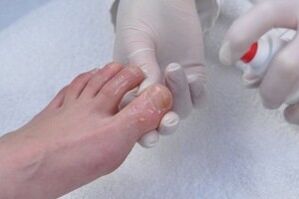
Mycosis of the nails is called onychomycosis, and it is caused by pathogenic fungi (dermatophytes).
Most often, the fungus affects the nails, less commonly - the skin. Onychomycosis is mainly caused by people who lead healthy lifestyles - in swimming pools, saunas, at the beach.
The symptoms of onychomycosis should not be confused with anything, as shiny and smooth nails become cloudy, rough and thick. It has yellow, grey, brown spots, and streaks or dents. Inflammation and swelling of the skin rollers around the nails. Nails can peel and chip, sometimes falling behind the nail bed.
Nail Fungus Treatment
Detecting fungal disease is easy, but getting rid of it is much more difficult. The treatment process is laborious and requires a lot of time and patience. The first results of treatment occur no earlier than 2 weeks after the start of treatment and take 6 to 12 months for the entire period.
The danger of nail fungal infection lies in the decline of immunity during the disease, allergic reactions, and exacerbation of chronic diseases.
Treatment for fungal diseases is different, depending on the area and type of fungus affected. Combination therapy is most often used when an oral drug and a topical antifungal are used in combination.
Preparations for topical treatments vary, but one of the most effective is an antifungal varnish, which covers diseased nails. Other topical treatments can be applied to the skin.
Measures to Prevent Nail Fungal Infections
According to statistics, 20% of the world's population suffers from fungal diseases, so it is very important to take disease prevention and personal protection measures.
Effective preventive measures include:
- Treat your feet with an antifungal ointment or any local medication before visiting public places of entertainment.
- Treat your feet and hands with a salt solution or bathe with 72% laundry soap after a pool or sauna session.
- Wear comfortable shoes and monitor sweaty feet to avoid creating conditions for fungal infections to grow and develop.
- Strictly observe the rules and norms of personal hygiene (personal use of shoes, slippers, underwear).
- Don't walk barefoot on the beach, wear light shoes.

















